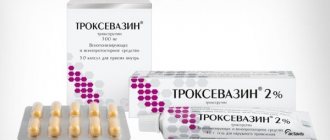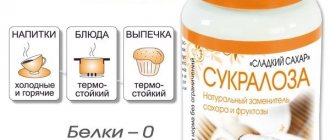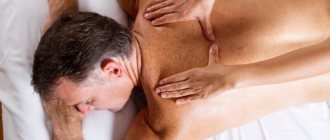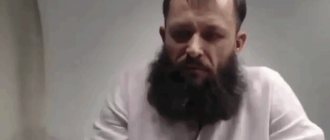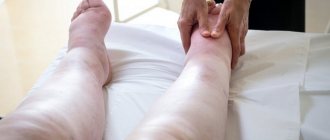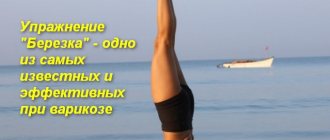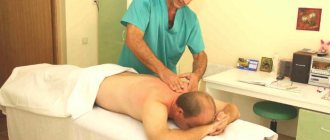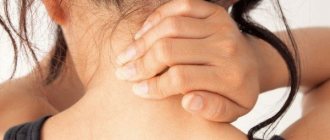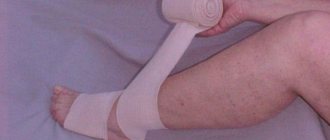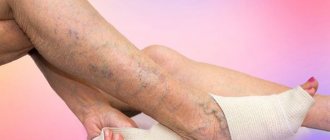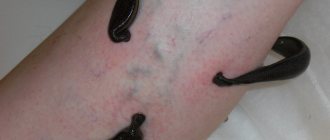Lymphatic drainage for varicose veins is one of the treatment methods aimed at significantly alleviating the patient’s condition. Varicose veins are a serious problem that affects more than 40% of the population. People who lead an inactive sedentary lifestyle or professional athletes whose veins suffer due to excessive stress, at some point notice that their legs begin to hurt badly. There are many symptoms that can indicate varicose veins. To alleviate the condition, lymphatic drainage massage is used.
It is important that the procedure is carried out
professional, otherwise the consequences can be dire. There are many types of foot massage. Some of them are strictly contraindicated for vascular diseases. Others, on the contrary, give positive results during treatment. It is worth figuring out what methods and physiotherapy techniques to use to get rid of the disease and its manifestations.
What it is
Lymphatic drainage massage for varicose veins of the legs is used by many specialists as one of the main means of concomitant therapy. Not only blood, but also lymph circulates throughout our body. This liquid washes all organs and internal systems. With proper circulation, a person feels good, but sometimes lymph accumulates near the internal organs, especially where inflammatory processes develop, and tissue swelling occurs. To get rid of this manifestation, a gentle, gentle massage is performed. Experienced massage therapists who have a medical education know through which channels and flows lymph circulates throughout the body, so they adhere to a clear massage technique without disturbing the functioning of internal organs and systems.
Lymph performs many beneficial functions in the body. It is this liquid that provides a protective function and helps fight viruses and bacteria. With varicose veins, these functions are disrupted. To restore the functioning of internal organs, a massage is prescribed. It performs the following functions:
- Provides lymph drainage from affected veins;
- Relieves pain, feeling of fullness in the limbs;
- Reduces inflammatory processes;
- Facilitates the general condition of the patient.
To achieve this result, you need to find a good massage therapist and first consult with your doctor. Varicose veins are treated by a specialist - a phlebologist. Get detailed advice regarding concomitant therapy methods and select the optimal treatment option.
There are several stages of development of varicose veins. At the initial stage, the patient does not have any external manifestations. Periodically there is pain in the shin area. Another symptom of the initial stage of the disease is slight swelling of the legs. If nothing bothers you, but marks from socks are noticeable in the ankle area, you should pay attention to this and visit a phlebologist for preventive purposes.
At this stage, lymphatic drainage for varicose veins of the legs will give excellent results. There is a high probability that drug therapy will not be needed at all.
The next stage of development is characterized by a small vascular network on the legs. This is noticeable under the knees, where the skin is especially thin. Lymphatic drainage massage can be performed, but under the supervision of a specialist and avoiding affected areas.
At the next stage, large veins protrude through the skin, nodes and bumps are noticeable. Often this stage requires surgical intervention. During the acute period of development of the disease, massage and other physiological procedures should be abandoned.
Knowing these simple rules, you will be able to monitor your health, promptly respond to the slightest changes in your general condition, and prevent the development of serious illnesses with numerous negative consequences.
How to carry out the procedure
If the patient still has no contraindications, experts recommend professional cupping massage in a cosmetology salon. In this case, a special apparatus is used, consisting of a can and a cylinder, which creates a vacuum. When using this method, the likelihood of the procedure being carried out correctly is higher.
Those who want to carry out the procedure themselves will need to strictly follow all the doctor’s instructions in order to achieve the desired result. You will also need to stock up on a sufficient number of cans in advance. The skin is first lubricated with Vaseline, after which cotton wool is tightly wrapped around long tweezers, moistened with alcohol, set on fire and inserted into the cavity of the jar without touching the wall for 2 seconds. After this, you need to quickly apply the can to the desired area. To enhance the effect, it is advisable to carry out the procedure after morning therapeutic exercises, and before starting the process, place your feet on an elevated surface for 10 minutes.
Benefits of the procedure
The benefits of lymphatic drainage massage for varicose veins are difficult to overestimate. It has a complex effect on the systems and functions of the body:
- It is a preventative measure - if you take courses of relaxing and lymphatic drainage massage of the whole body twice a year, the likelihood of developing varicose veins decreases several times;
- Excellent relief from pain - massage can be used instead of traditional non-steroidal and steroidal painkillers;
- Restores blood supply, warms tissues, prevents inflammatory processes;
- Prevents the development of thrombophlebitis - a negative consequence of varicose veins.
Where is it better to do it yourself - at home or with a specialist?
If the purpose of the massage is to relieve heaviness and swelling of the legs after exercise, then self-massage can be performed. To do this, you need to lie on your back, raise your legs bent at the knees and first massage your thigh with stroking movements.
You need to start from the popliteal area and move towards the iliac region. After 3 - 5 minutes, kneading and rubbing of the foot and lower leg is carried out. The massage lasts from 10 to 15 minutes and ends with stroking the entire surface of the lower limb, then moves to the other leg.
If effective action is necessary (in more serious cases), it is recommended to consult a specialist, since ignorance of the anatomical location of the vessels can cause complications in the form of their blockage, disruption of local or systemic blood flow.
Contraindications and restrictions
Many patients are interested in whether it is possible to do lymphatic drainage massage for varicose veins. The answer to this question depends on the current condition of the individual patient. In most cases, this method of physiotherapy is not prohibited, but in the acute period of development of the disease it is better to avoid additional stress.
There are also absolute contraindications. This list includes:
- Thrombophlebitis of the extremities;
- Presence of cancer;
- Tendency to bleeding;
- Purulent sepsis.
Thrombophlebitis of the extremities
Tendency to bleed
Presence of cancer
Purulent sepsis
The list of relative contraindications includes the development of inflammatory processes, infectious diseases in the acute phase, pregnancy, and elevated body temperature. After stabilizing your condition and getting rid of such symptoms, you can sign up for a massage.
Side effects and contraindications
Since foot massage for varicose veins is a therapeutic procedure, it has its limitations for use. These procedures not only increase blood circulation and normalize tissue nutrition. Massage movements also affect the superficial veins of the extremities, which can be greatly thinned due to illness. Therefore, there is a possible risk of injury to the walls of blood vessels and bleeding from them.
Another dangerous consequence is the separation of blood clots, the appearance of which is often accompanied by varicose veins. Veins can contain clots of different sizes, and the separation of even the smallest of them from the vein wall can be fatal.
Therefore, before using the services of a massage therapist, the patient must undergo a comprehensive examination by a phlebologist, which includes general clinical tests and duplex scanning of the veins. The latter method accurately determines the presence of blood clots in blood vessels.
Along with the previous ones, phlebitis (inflammation of the veins) is also a strict contraindication to foot massage. During the session, it is possible that the pain may increase, as well as the inflammatory process. During exacerbations, it is better to provide rest to the limbs.
Contraindications common to all patients are:
- trophic ulcers - manifestations of varicose veins in the later stages;
- pronounced swollen superficial veins;
- condition after phlebectomy and other interventions regarding the vessels of the lower extremities;
- leg fractures, osteoporosis;
- high temperature, fever;
- acute stage of any disease;
- blood diseases, taking anticoagulants;
- other vascular diseases that worsen the condition of the vascular walls;
- oncological diseases, especially at the stages of metastasis;
- the presence of wounds on the surface of the skin;
- psoriasis, other skin abnormalities, etc.
In other words, in order to be 100% sure that the massage will bring only positive effects, you should visit your doctor. If the doctor's approval is received, you can safely begin to follow the instructions.
Massage for varicose veins in pregnant women
Pregnant women often face the problem of varicose veins. This condition is provoked by natural factors. Due to excessive stress on the body, blood circulates faster, the load on the walls of blood vessels increases, and they stretch. After childbirth, the condition returns to normal. In rare cases, varicose veins continue to bother a woman. This is only possible after numerous pregnancies.
Expectant mothers encounter unpleasant sensations, but classical lymphatic drainage massage is contraindicated for them. To get rid of pain and a feeling of heaviness in the limbs, you can perform a light relaxing massage.
The specialist will introduce you to his technique, and you will be able to help yourself at home. And after childbirth and the recovery period, it is advisable to undergo a course of lymphatic drainage massage for preventive purposes.
During pregnancy, special compression stockings and tights will help ease your general condition and improve blood flow. They are selected individually. Contact your obstetrician-gynecologist for this. At first, walking in stockings is uncomfortable, but over time, pregnant women get used to it and feel a noticeable improvement in their general condition.
How the procedure can be useful
Today, there are many types of massage, each of which meets specific goals and is used for certain characteristics of the body.
Cupping massage has been known since the times of Ancient Rome and China, and to this day it has not lost its popularity in the fight against various diseases. The operating principle of this type of massage is based on the fact that the necessary reflexes to a stimulus, which is a vacuum, are artificially evoked. Many people remember from Soviet times how cups were used for colds. In the case of massage, the mechanism of operation of this remedy is no different.
However, when using cupping for massage purposes, other results are sought. This procedure is aimed at ensuring that, due to irritation by the vacuum, the muscles become toned again and their firmness and elasticity return. As a result of this, blood circulation should return to normal, which will have a beneficial effect on the condition of the veins. In addition, cupping vacuum relieves pain and swelling, normalizes metabolism in cells. In addition, the procedure affects the circulation of lymph and intercellular fluid in the treated area of the body.
Kinds
Lymphatic drainage massage of the legs
Varicose veins are treated in several ways. It can be manual or hardware. The first method is more common. The influence on tissues and lymphatic flows is carried out with the hands. The specialist presses with a certain force so as not to cause severe pain to the patient, but also to achieve the desired effect. Benefits of manual massage:
- You can adjust the force on the tissue;
- Lower cost of a course of physiotherapy;
- The individual characteristics of the patient are taken into account.
The only drawback of such a massage is that if the master is poorly qualified, there is a high probability of causing damage to the patient’s health, so you should carefully and carefully choose a massage therapist.
Hardware lymphatic drainage massage is carried out using specialized equipment. A special nozzle is applied to the legs, inside which a vacuum is created. The skin is retracted and an intense effect is exerted on tissues and organs. The devices used have several operating modes, but they cannot always be correctly configured taking into account the characteristics of the patient’s health condition.
It is advisable to use hardware technologies only for preventive purposes. For treatment, you should choose a manual massage.
Types of massage for varicose veins
There are several types of leg massage for varicose veins, which have individual characteristics and are therefore used at different stages of the disease and for various concomitant health disorders. There are not many techniques with a predominant pronounced anti-varicose effect. Most types of foot massage for varicose veins are borrowed from cosmetology practice. This is a procedure with cupping and vacuum exposure, lymphatic drainage and modern hardware techniques LPG, hydromassage and others.
The use of cupping massage for varicose veins of the lower extremities is allowed only at stage 1, in which there are no signs of decompensation (visible veins, tissue ischemia, etc.). With developing venous insufficiency, the vacuum created by the cups helps normalize capillary and venous blood flow, removes swelling and helps normalize tissue nutrition. In later stages, as well as in chronic varicose veins, any type of vacuum massage for varicose veins, including cupping, is contraindicated.
The use of LPG massage for varicose veins - a more modern hardware vacuum technique - shows excellent results at stages 1 and 2 of the disease. For chronic and rapidly progressing varicose veins, this technique is contraindicated.
The use of gentle lymphatic drainage massage techniques for varicose veins of the legs is justified at any stage of the disease, since it is accompanied by stagnant processes. With the help of hardware or mechanical lymphatic drainage, you can achieve significant improvements in several parameters:
- elimination of swelling;
- improving tissue nutrition and reducing ischemic changes;
- restoration of venous blood flow;
- eliminating muscle spasms and reducing pain.
As for the popular anti-cellulite leg massage, for varicose veins it can be used extremely carefully, and only in the absence of superficial dilated veins and pronounced ischemic changes. In the initial stages of the disease, any technique of this type of therapy will be useful, especially if the patient is overweight.
For varicose veins, the anti-cellulite effect should not be accompanied by heating of the tissue. Patients with this diagnosis are recommended to do massage without the use of warming ointments and pre-warming of the extremities.
The use of hydromassage of the legs for varicose veins is possible at any stage of the disease. It can be carried out in salons and specialized clinics, as well as at home. A hydromassage can be either a special bathtub with hydromassage or a shower head with several water pressure settings. Along with ordinary warm water, medicinal solutions can be used during procedures:
- essential oils with a strengthening and tonic effect;
- decoctions of chamomile or calendula;
- for severe leg fatigue, you can use decoctions with a relaxing effect (mint, rosemary, etc.).
For varicose veins, you can also use mechanical household foot massagers equipped with pimply protrusions, soft needles or a vibrating attachment. Such devices are most effective at the initial stage of varicose veins, and in case of chronic severe damage to the veins, they help alleviate the symptoms of the disease.
Rules
There are clear rules for conducting a therapeutic massage session. First, the patient's body warms up. At this stage, you should not make intense movements. The limbs are gently stroked. In this way, a rush of blood to the tissues is ensured. They become more elastic and pliable. Each movement is carried out along certain lines. These patterns are learned during massage technique training. If the work is performed by an unqualified specialist, instead of reducing tissue swelling, he can cause even greater accumulation of lymph and its stagnation. This is another reason why you need to contact professionals.
Contraindications for carrying out
The list of diseases for which it is prohibited to massage limbs with dilated veins in any way includes the following pathologies:
- myocarditis, endocarditis;
- accumulation of fluid in the pericardial sac;
- heart defects with circulatory decompensation;
- insufficiency of coronary blood flow, severe or frequent attacks of angina pectoris;
- stage 3 hypertension;
- diabetic neuropathy;
- vasculitis of autoimmune origin;
- thrombophlebitis;
- aneurysm;
- trophic ulcers on the legs;
- erysipelas.
Features of self-massage
If you want to master the technique of self-massage to do it at home, you need to ask a specialist to talk about the features of this process. Long-term holding of the limbs at a level above the head will help relieve tension from the leg area, the feeling of fullness from the inside and a strong burning sensation. When you come home from work, lie down on the bed and put your feet up on a high pillow, the back of the chair. Lie in this position for some time. After this, you need to warm up the tissues. Apply stroking movements to the legs and thighs. You can use the circular technique by drawing lines clockwise. No need to try hard. Just stroke yourself. If a real professional massage sometimes causes discomfort, then with self-massage you should experience only positive emotions.
The main rule of any physiological effect is that if you feel pain or discomfort, then you should stop the session immediately. If discomfort does not disappear over time, consult a doctor.
Video: Lymphatic drainage of the legs. Back surface. Lymphatic drainage
Self-massage of the legs is the simplest and most accessible method of preventing and treating venous pathology. Foot massage for varicose veins at home is an integral part of the therapeutic complex. This procedure allows you to strengthen the walls of blood vessels, tone muscles and veins, relieve fatigue and swelling. There are various options for self-massage:
- you can give a contrast shower to your legs, then lightly wipe your limbs with a terry towel in a circular motion;
- you can massage your feet using orthopedic mats, balancers, a roller, small stones, sand, etc.;
- you can use electric massagers, hydromassages, etc.;
- a simple manual massage targeting various areas of the limb.
Manual foot massage at home
Manual massage does not contain complex techniques. It can be performed both at home and anywhere where it is appropriate. At the first stage of self-massage, begin to sequentially work on each part of the limb from the foot towards the knee. The techniques should be light, like stroking. You should gradually increase your hand movements so that a slight pressure is felt. Once you reach the knee, move towards the thigh. We use techniques for both limbs. Next we apply patting. It should be as weak as possible and exclude areas with telangiectasia and reticular veins. Total self-massage time: 10-15 minutes. Upon completion, the limbs should be positioned 15-20 centimeters above the level of the heart. Hold this position for 30-60 minutes.
For an accurate diagnosis, contact a specialist.
Varicose veins require complex treatment, which includes drug therapy and the use of conservative and surgical methods. One of the ways to alleviate the symptoms of the disease is massage for varicose veins. There are many techniques that can improve the condition of the veins and reduce congestion. However, experts do not recommend using them without consulting your doctor, since an incorrectly chosen massage for varicose veins can aggravate symptoms and lead to complications.
Where do they make it?
If you need lymphatic drainage
massage for varicose veins of the limbs, it is advisable to seek help from a clinic. Massage therapists work in large outpatient clinics. Reception there is by appointment. There are such masters in rehabilitation centers. It is not advisable to go to a regular beauty salon. The local workers can perform an anti-cellulite massage, but they can’t handle a therapeutic one.
Consult a phlebologist. Subspecialists often have contacts of good massage therapists and physiotherapists. If he allows you to take a course of such influence and gives recommendations, you can safely turn to experts for help.
At home, you can carry out such procedures only after the master introduces you to the self-massage technique and checks that you are doing everything correctly. You should not use video lessons and massage manuals. This can harm the entire body.
Main types of therapeutic massage
Today, several of the most popular types of physiotherapeutic effects (massage) on affected vessels have been identified. These include:
1. Lymphatic drainage. Can be carried out several times a week. A distinctive feature is the high safety of the procedure. For this reason, this therapy has virtually no contraindications.
2. Thai or acupuncture massage. It belongs to the category of exotic sessions for residents of our country. It consists of a targeted effect on the most active areas of the body. In this case, the master can use not only his hands, but also his elbows and knees to perform the procedure. For varicose veins, this type of treatment is not contraindicated. However, it is important to remember that finding a professional in this field in Russia is extremely difficult. Therefore, it is better to use more traditional methods of therapy. Moreover, patients with heart disease, oncology, fractures, as well as pregnant women should not resort to Thai medicine.
3. Hydromassage. is one of the safest and most pleasant types of effects on the veins. This procedure is performed by exposure to jets of water under pressure directed at the affected vessels, as well as the tissues surrounding them. There is a certain order for the session:
- the impact begins with the feet: each limb is treated in turn with a stream of water for 3-4 minutes;
- the water flow is smoothly transferred to the area of the kneecap, where you should linger a little and massage the joint in a circular motion;
- the next point of influence, like the active zone of the body as a whole, is the lower back. Similar to the previous steps, it is necessary to direct water to the lumbosacral spine for 1-2 minutes;
- alternately, on each side, the water flow is directed to the outer surface of the thighs and stomach. This completes the preparatory stage;
- massage of the calf should be performed very carefully, directing movements from bottom to top. In this case, areas of significant varicose veins (if any) should be avoided. This procedure helps to activate the work of deeper vessels. Initially, it is enough to spend about 15 minutes on it, then the time should be gradually increased to half an hour. One of the types of hydromassage is underwater. It is safer because pressure is applied to the skin through a layer of water. However, you should know that hydrotherapy cannot be performed on patients with certain skin diseases, fever, tuberculosis, acute infectious processes, venous thrombosis, as well as cancer patients.
4. Honey rubbing (indicated only in the earliest stages of the disease). However, due to severe compression of soft tissues, procedures should not be performed without first consulting with your doctor. Accordingly, you can find out whether such a massage can be done for varicose veins only from your doctor.
6. Vacuum massage for varicose veins (can be extremely rarely recommended by phlebologists due to the high risk of damage to the fragile venous wall). You can purchase devices for the procedure at any medical equipment store. Unfortunately, many patients resort to vacuum treatment on their own. However, if the doctor nevertheless allows you to treat varicose veins in this way, you should remember some restrictions. This procedure is not suitable for patients with skin diseases, acute phases of any pathological conditions, an oncological diagnosis, or cardiac pathology.
Briefly about the procedure and its role in phlebology
Lymphatic drainage massage significantly reduces swelling and increases the patient's resistance to physical activity.
The procedure helps strengthen the vascular walls of the veins in the legs, and also significantly relaxes and eliminates the feeling of fatigue in the limbs. The massage is primarily aimed at restoring lymph circulation, which performs many useful functions in the body. It has a protective effect and helps eliminate bacteria and viruses. Its normal circulation is often disrupted by varicose veins, so a special massage is prescribed. The procedure has the following effects:
- promotes the outflow of lymph from damaged areas;
- helps eliminate inflammation processes;
- relieves pain in the limbs;
- improves the general condition of the body.
How is the procedure performed?
Manual massage
During a manual massage, the patient sits on a special couch, giving the specialist a bare area of the body. To create better glide and impact, special cosmetics for massage are used. The massage therapist presses with a certain force on specific areas of the body. The force allows you to get the desired effect, but does not cause severe pain in the patient. The first procedure does not exceed 5 minutes. Gradually, as the body gets used to it, the duration of the session increases.
Hardware lymphatic drainage is carried out using special equipment. A special nozzle is placed on the patient’s legs, in which a vacuum is formed. In the process, the skin is pulled inward, which causes an active effect on organs and tissues. The equipment has several modes, but sometimes it is quite difficult to choose the appropriate mode, taking into account the individual characteristics of a particular patient.
Features of classic massage
Massage is recognized as an effective method of combating many diseases.
The positive results of the procedure are confirmed by both traditional medicine and Ayurveda.
A qualified massage therapist can give a person strength and improve his well-being without the use of drugs.
The classic technique is considered to be gentle movements that cover a large surface of the skin and muscle tissue. The force of impact increases slightly in the middle of the procedure, and gradually fades away towards its end.
The main rule of classical massage is that movements must be performed from the periphery towards the lymph node. The technique begins with warming the body, and then moves on to treating problem areas. Stages of the procedure: stroking, rubbing, kneading, vibration.
What is LPG
LPG massage is also called vacuum-roller massage, since the specific operation of the device used is aimed at capturing the skin with several rollers. The handpiece is controlled via a computer, where you can configure parameters to suit the individual characteristics of the patient. Different cases may require from 4 to 16 skin grabs per second, and the types of folds created by the rollers may also vary.
The method was named after the engineer who developed it, Louis Paul Guitet.
LPG massage is aimed at improving blood microcirculation in the treated area, relieving spasms, swelling and pain. Some sources indicate that the technique may also be useful in relation to varicose veins - it stimulates the elasticity of blood vessels, and also helps to tone their walls. Also, a full course of procedures allows you to strengthen the body as a whole, as a result of which it will be easier for it to overcome varicose veins.
Conducting an LPG course
Before the massage, you need to remove your clothes and replace them with a procedural suit that helps the skin interact with the device in the best possible way.
For those wishing to make an appointment for the LPG procedure for the first time, the information will be useful, especially since learning about all its nuances will be very helpful. After a special examination and identification of the patient’s characteristics, a specific regimen is selected.
Before the massage, you need to remove your clothes, replacing them with a procedural suit that helps the skin interact with the device in the best possible way. The specialist makes graphic marks on the suits to indicate massage areas. Next, the patient must lie down on the couch, a manipulator is passed through the designated areas, rollers moving in different directions, touching the skin folds. To increase the effectiveness of manipulations and create load on the leg, it needs to be raised and bent at the knee.
The duration of the session is generally 45 minutes, at the end of which the patient changes into standard clothes.
The entire course can be divided into 12-17 procedures for a period of 2 months, after which the massage is carried out once a month, depending on the recommendations of a specialist. There is no need to rush to see the result; you will have to wait, since the visible effect will appear after 6-7 trips to the massage room.
Can lymphatic drainage massage prevent varicose veins?
Lymphatic drainage massage is characterized by pronounced therapeutic properties. The procedure activates blood circulation, improves lymphatic drainage, helps reduce swelling, and prevents the development of congestion in the lower extremities. Lymphatic drainage has a positive effect on dilated veins of the legs with varicose veins, helps strengthen the vascular walls, increase their tone and elasticity. Thanks to this, fatigue disappears after a long stay on your feet or heavy physical exertion, lymphatic swelling of the leg is eliminated and the patient’s condition improves.
Lymphatic drainage is an effective prevention of varicose veins and many other vascular diseases. The main thing is to consult a doctor when the first complaints arise, and not to delay, because this can lead to rapid progression of the pathology.
What massage to do description and video
Fans of oriental medicine have already heard about Taoist foot massage for varicose veins or read rave reviews from satisfied users. The name of the massage comes from ancient times. Taoists believe that a person’s poor health comes from poorly distributed energy; a person constantly feels tired. It is necessary to have a master's hands exert influence on the human body.
Latest information: Burdock for varicose veins reviews
Taoist massage creates conditions for complete relaxation of the human body, releases accumulated energy, and charges with new strength. According to fans of this type of massage, after it you want to soar and achieve new victories.
Taoist massage is useful and does not have a deep impact; all movements occur smoothly and, most importantly, in a circular pattern. You can reduce blood stagnation in the veins and get rid of the symptoms of varicose veins. Natural oil is used for massage, sometimes it is a whole cocktail of excellent natural oils.
The procedure must be carried out several times, preferably at the end of each working week for a month. According to experts, this period of time is enough for all the energy in the human body to return to normal.
| This massage is suitable for any stage of development of varicose veins and does not have a strong effect. If you want to use this massage, you can safely please your body with a wonderful procedure, fill it with strength, and relieve the first symptoms of the disease. |
Using LPG massage, swelling is eliminated, scars and stretch marks disappear. The advantage of hardware massage, or rather its neurosensory effect, is that thanks to its effects, not only a person’s appearance improves, but also coordination of movements and posture.
LPG massage is not a simple device, but a real controlled computerized complex. The cosmetologist has the opportunity to set certain parameters of the effect, taking into account the individual characteristics of the patient’s skin and subcutaneous fat.
It is this approach that promotes increased efficiency.
Benefits of foot massagers
The most obvious effect we get from the work of a massager is relieving the feeling of heaviness that occurs in the legs after a hard day. But the impact of this useful device is not limited to this! Hardware massage promotes proper blood and lymph circulation. It eliminates swelling that leads to overstretching of veins, and therefore ensures the prevention of varicose veins.
In addition, the feet are truly a magical part of the body. They contain more than 150 biologically active points, known to the masters of oriental medicine since ancient times. Did you know that the inner edge of the foot is connected to the spine, the balls of the toes are connected to the back of the head, and the area located at the beginning of the arch of the left leg is connected to the heart? By influencing these and other points on the soles of the feet, the massager helps to improve the functioning of the entire body.
The relationship between varicose veins and cellulite
Enlarged veins and “orange peel” have a common origin. The culprits are problems with blood vessels. The weakness of their walls and valves leads to swelling, visible veins through the skin, and then protrusion. And of course, heaviness in the legs, swelling, pain.
The relationship between cellulite and varicose veins
Impaired blood circulation and other signs of varicose veins cause changes in metabolic processes, including in subcutaneous fat. Its layer grows, fibrous areas form in it, which lead to the formation of cellulite. The stronger the swelling, the better the conditions for the formation of “orange peel”. On the other hand, its thickening further prevents the vessels from functioning properly. Therefore, varicose veins with cellulite develop faster.
We recommend reading about lymphatic drainage of the legs. You will learn about indications and contraindications for the procedure, methods of performing manual, hardware and lymphatic drainage foot massage, and results. And here is more information about performing pressotherapy.
Method of implementation for varicose veins of the legs
In the presence of varicose veins, the main goal of massage is to improve the outflow of blood and lymph from the legs. This unloads the blood vessels, distributes fluid in the tissues, and relieves swelling.
Based on the desired results, a foot massage for varicose veins is performed, you need to focus on the following algorithm of actions:
- Foot massage is performed in a lying position, on your back. The legs need to be slightly bent at the knee and given an elevated position.
- First, the thighs are massaged, then the legs and feet.
- If the lesion is one-sided, they work with the healthy limb first.
- Massage techniques include stroking and rubbing . Stroking is superficial planar and continuous grasping, alternating with semicircular rubbing. All techniques are performed effortlessly, with light, sliding movements. Avoid touching areas with damaged veins.
- If you have varicose veins, it is forbidden to knead the muscles and use vibration techniques.
- To improve the trophism of the skin, you can use pinching , first only the skin, gradually drawing the subcutaneous layer into the process.
- The massage ends with foot exercises, which are aimed at improving blood flow and lymphatic drainage in the limbs - flexion and extension of the foot, rotation of the feet, alternate lifting of the limbs, walking in place.
- During the procedure, the patient should not experience any discomfort or pain.
Preparation for the procedure
Preparing for a massage for varicose veins is very simple. It does not require any special preparations or costs. Given its simple rules, you can significantly increase the effectiveness of the procedure.
It is best to do a massage in the morning, after physical therapy. The patient should not have any complaints from the underlying disease, as well as about the functioning of other organs and systems. Before the session, you need to lie down for 10-15 minutes, placing your legs in an elevated position. If there are contraindications, it is better to reschedule the session.
Self-massage
If a phlebologist has prescribed a course of foot massage and you decide to do it yourself, you should follow several rules.
- Before starting the procedure, be sure to wash your hands with soap.
- Place your lower limbs in a horizontal position.
- All movements should be performed smoothly and with ease, without strong pressure on the calves and thighs.
- Do not massage areas of visible veins and varicose veins.
- The massage should be carried out in the direction from the feet to the hips.
- After completing the procedure, give your legs a little rest, placing them in an elevated position.
- When the session is finished, put on compression clothing if necessary.
Hardware lymphatic drainage
Lymphatic drainage massage of the legs at home is not always effective, especially in cases of progression of any disease of the lower extremities.
Then experts recommend using a hardware method, which comes in three types:
- microscopic currents;
- compressed air therapy;
- vacuum.
Hardware lymphatic drainage contracts the walls of blood vessels, rather than simply squeezing them, therefore, the process of restoring lymph movement is accelerated, returning the legs to their former health.
Indications: cellulite, swelling of the lower extremities, initial stage of varicose veins, enlarged lymph nodes, excess weight.
Contraindications: presence of skin diseases, oncology, tendency to blood clots, while expecting a child or lactation.
Microcurrents
Hardware lymphatic drainage with microcurrents is a superficial procedure. Light electrical impulses affect the lymphatic vessels, evenly squeezing them, which has a beneficial effect on the movement of lymph.
The procedure also causes muscles to contract, which helps tighten the skin and restore their tone. In addition, microcurrents affect the nervous and other systems of the body, healing them.
Advantages of this procedure:
- suitable for thin and sensitive skin;
- trains small vessels and capillaries;
- smoothes and moisturizes the epidermis;
- has a calming effect.
Microcurrent massage has additional contraindications:
- presence of a pacemaker;
- heart diseases;
- suffering a heart attack or stroke;
- the presence of metal implants in the problem area.
The essence of microcurrent massage: the working area is lubricated with a special gel that allows electrical impulses to be carried out, and two electrodes are installed - with positive and negative charges. The first remains in place, and the second moves in the direction of the lymphatic flow.
Be sure to read: How to sunbathe properly in a solarium: rules for visiting, benefits and harms
For therapeutic purposes, medications are additionally applied to the problem area, which, under the influence of microcurrents, penetrate into the deep layers of the epidermis.
The session lasts 10–15 minutes. The number of procedures is determined by a specialist, but there cannot be less than 5.
Pressotherapy
Pressotherapy refers to deep types of lymphatic drainage, in which the effect on lymph occurs by creating high external pressure on the lower extremities.
Massage is indicated to solve the following problems:
- phlebeurysm;
- swelling of the legs;
- overweight;
- cellulite.
Benefits of pressotherapy:
- safety and painlessness of the procedure;
- gentle effect on the skin;
- minimum contraindications.
The massage is carried out using a special suit, which is high boots or pants made of thick fabric, into which compressed air is supplied. The intensity of pressure is regulated by a computer program, which allows you to select individual indicators taking into account the characteristics of the disease.
The pressure generated affects the toxins and wastes present in the body. Once in the lymph, they are dispersed through the bloodstream, thereby cleansing the vessels and tissues.
Number of procedures – 10–15. It is recommended to perform them every other day; sessions can last up to six months.
Vacuum method
Vacuum lymphatic drainage massage of the legs (also possible at home) allows you to tighten the skin, improve its condition in general, and also solves therapeutic problems: it fights the initial stages of varicose veins and cellulite.
Benefits of the procedure:
- quickly relieves swelling;
- eliminates the first signs of aging of the epidermis;
- allows you to get rid of excess fat;
- stimulates natural collagen production;
- fights the manifestations of cellulite and varicose veins.
Among the disadvantages, experts note the appearance of bruises when the vacuum force is incorrectly selected.
Massage is usually performed on the thighs and buttocks. The skin is first cleaned, then a special massage agent is applied to it, ensuring good gliding. Install a vacuum connected to a device that regulates the strength of the air supply, and slowly move it in the direction of the lymphatic flow.
Please note that vacuum lymphatic drainage is prohibited for severe varicose veins or thrombophlebitis.
To achieve a lasting result, you will need at least 10 massage sessions. The procedure can be repeated after 3 months.
Lymphatic drainage massage of the thighs using a vacuum can be done independently. A silicone jar is suitable for this, which can be purchased at a pharmacy or a specialized medical equipment store.
The essence of the procedure: warm up the problem area with a hot shower or intense rubbing, apply oil or cream, place a silicone jar and gently move it from bottom to top. In this case, it is necessary to regulate the strength of the effect: the skin should be slightly pink, and not deep red. Duration of massage – 10 minutes.
